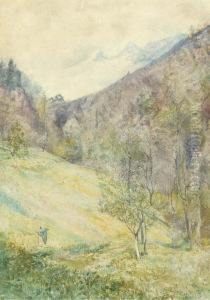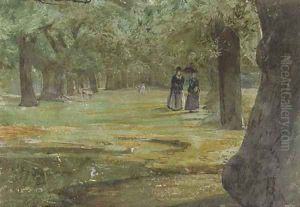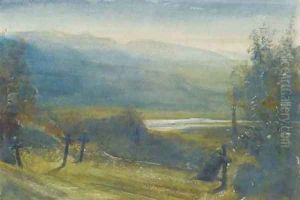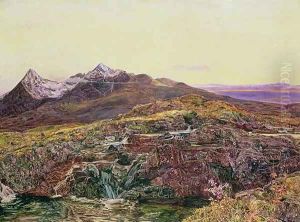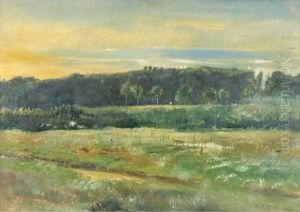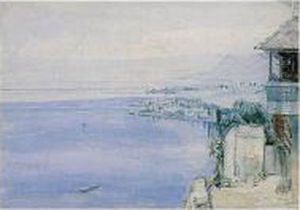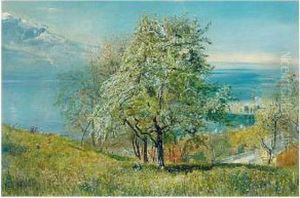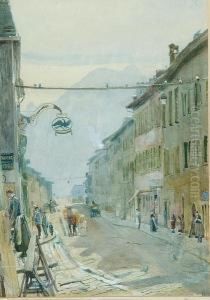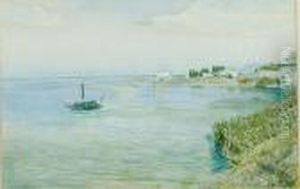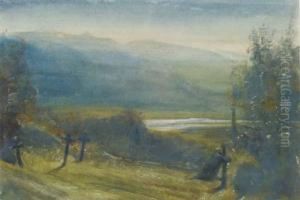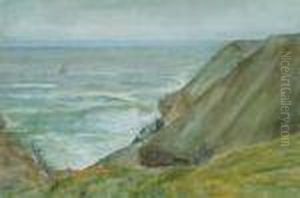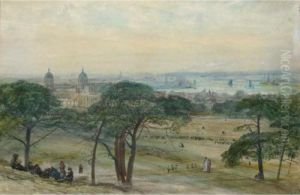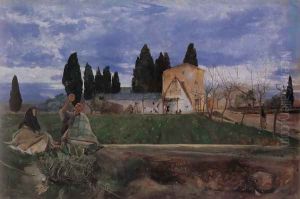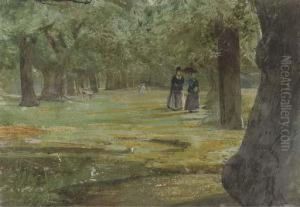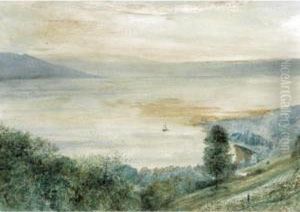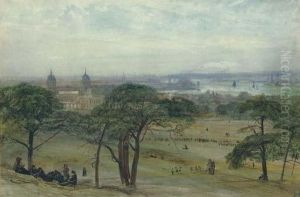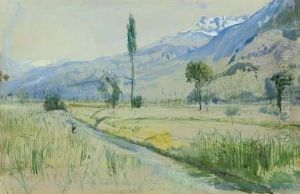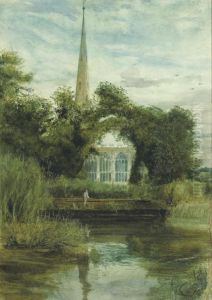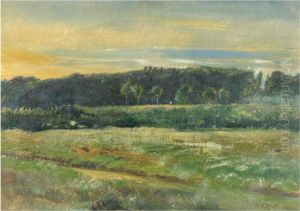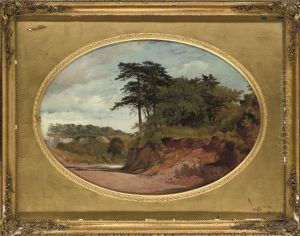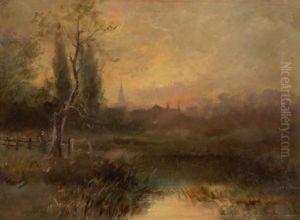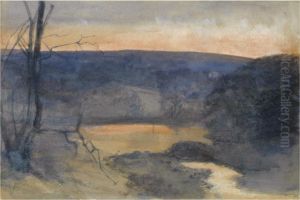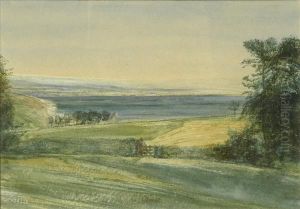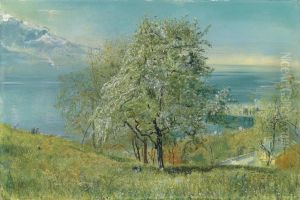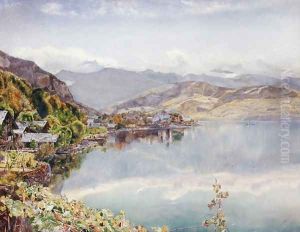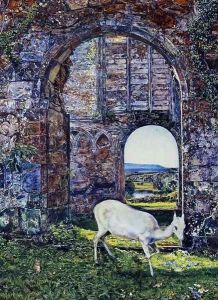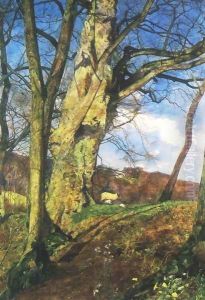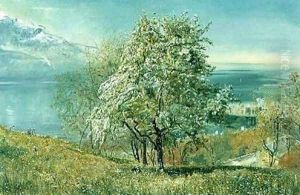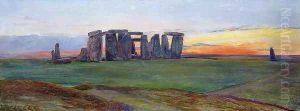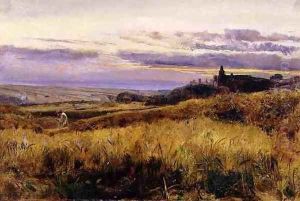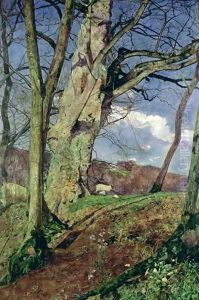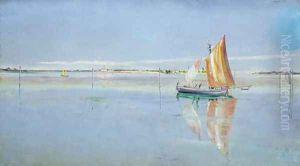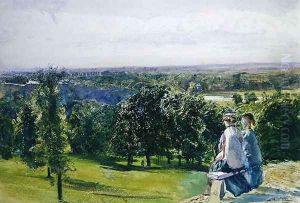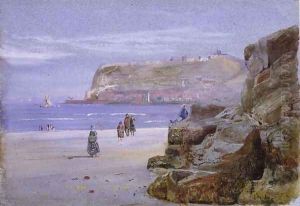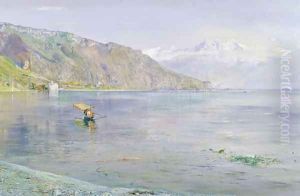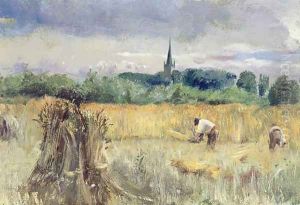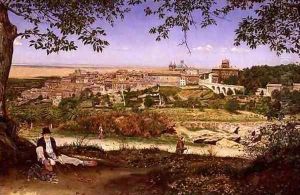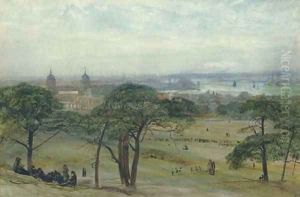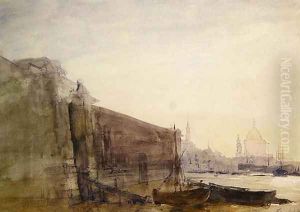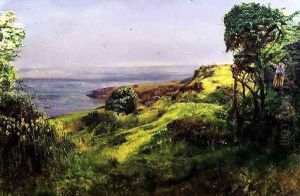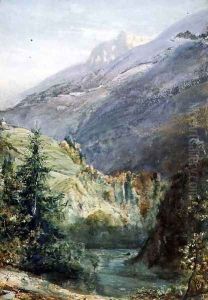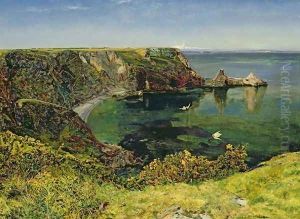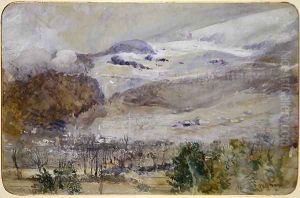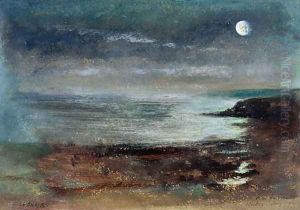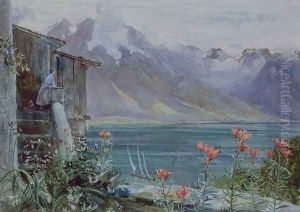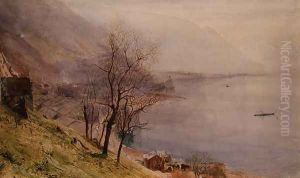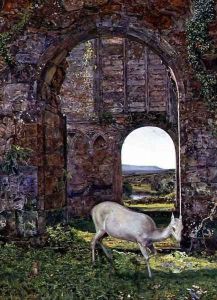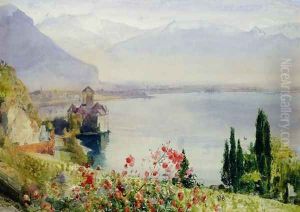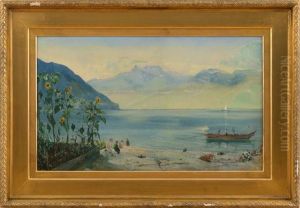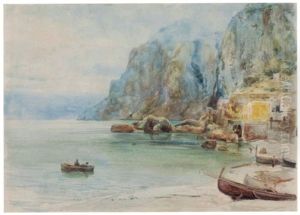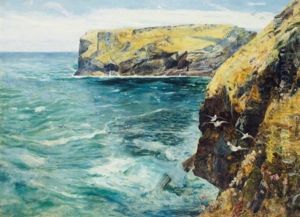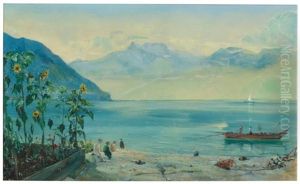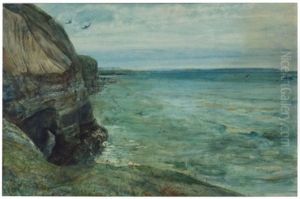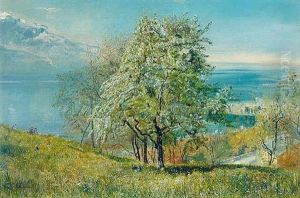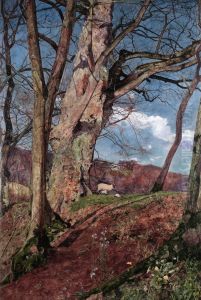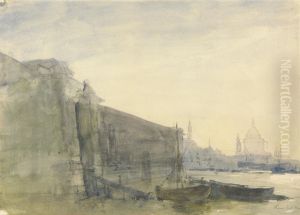John William Inchbold Paintings
John William Inchbold was an English painter born on April 29, 1830, in Leeds, Yorkshire. He was known for his works in the style of the Pre-Raphaelite Brotherhood, a group of English painters, poets, and critics founded in 1848 who aimed to reform art by rejecting what they considered to be the mechanistic approach first adopted by Mannerist artists who succeeded Raphael and Michelangelo.
Inchbold began his career as an apprentice lithographer, but his passion for painting soon led him to pursue art more seriously. He was particularly influenced by the works of John Ruskin, the leading English art critic of the Victorian era, whose emphasis on the detailed observation of nature resonated with Inchbold. Inspired by Ruskin's principles, Inchbold sought to capture the intricacies of the natural world with precision and vivid detail in his landscapes.
By the 1850s, Inchbold had become associated with the Pre-Raphaelites. His painting 'Anstey’s Cove' (exhibited in 1853) reflects the movement's characteristic attention to detail and vibrant color palette. However, Inchbold never became an official member of the Brotherhood, although he did exhibit his works at the Royal Academy and other venues alongside Pre-Raphaelite artists.
Throughout his career, Inchbold traveled extensively, finding inspiration in the varied landscapes of France, Switzerland, and Italy. His journeys resulted in some of his most notable works, including 'Lake of Geneva' and 'St. Bernard's Chapel.' These paintings are celebrated for their luminosity and meticulous rendering of natural scenes.
Inchbold’s dedication to capturing the subtleties of light and atmosphere often led him to work on a single painting for an extended period, sometimes years, to achieve the desired effect. This meticulous approach, however, was not always financially rewarding, and Inchbold struggled with poverty and lack of recognition throughout his life.
John William Inchbold died on January 23, 1888, in Headingley, Leeds. Despite his limited commercial success during his lifetime, his work has been reassessed over time and is now admired for its contribution to the Pre-Raphaelite movement and its influence on the development of landscape painting in the 19th century.
